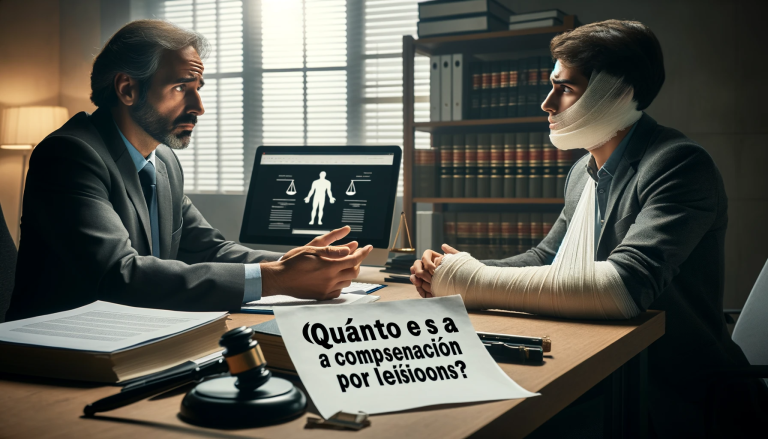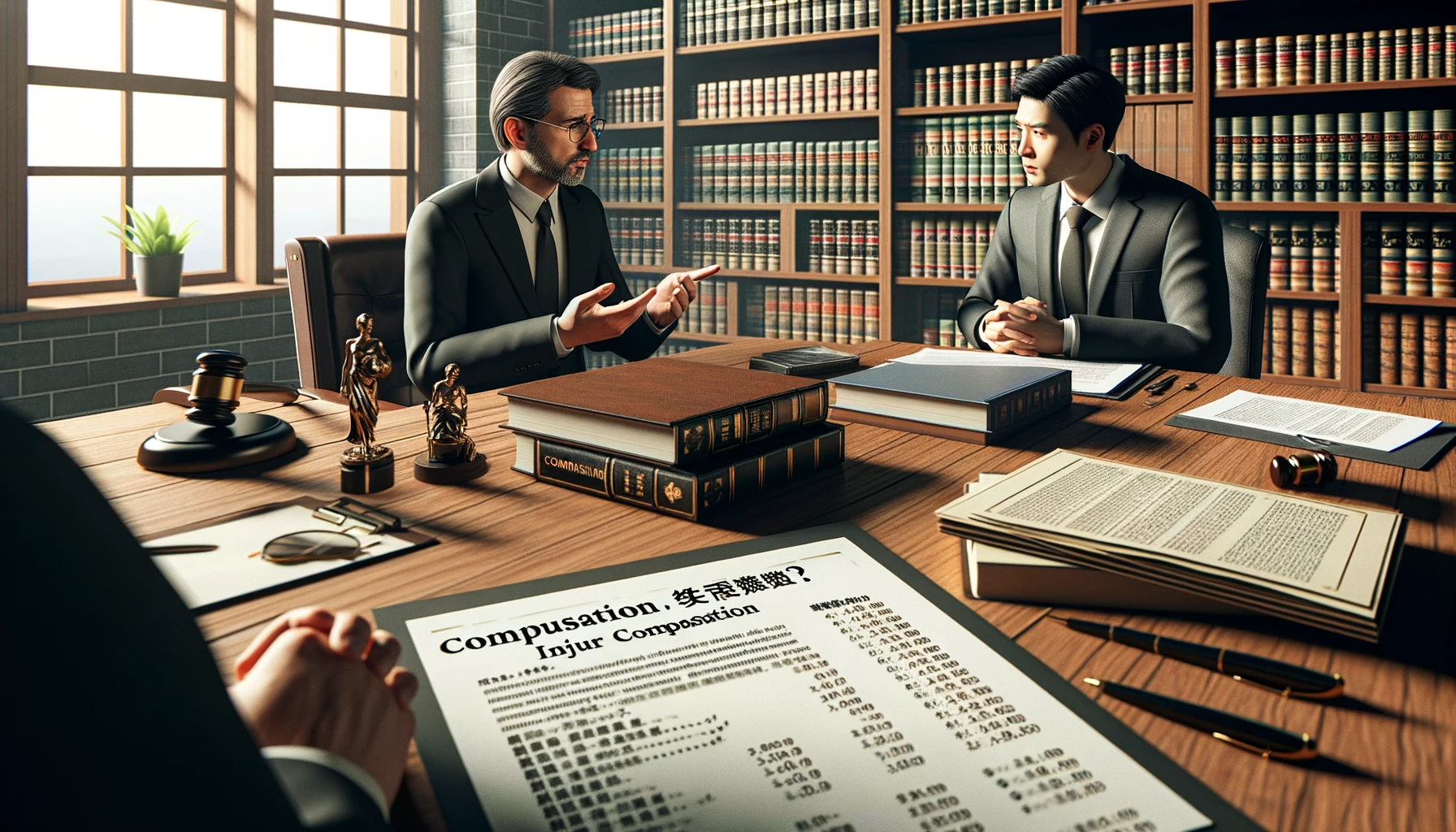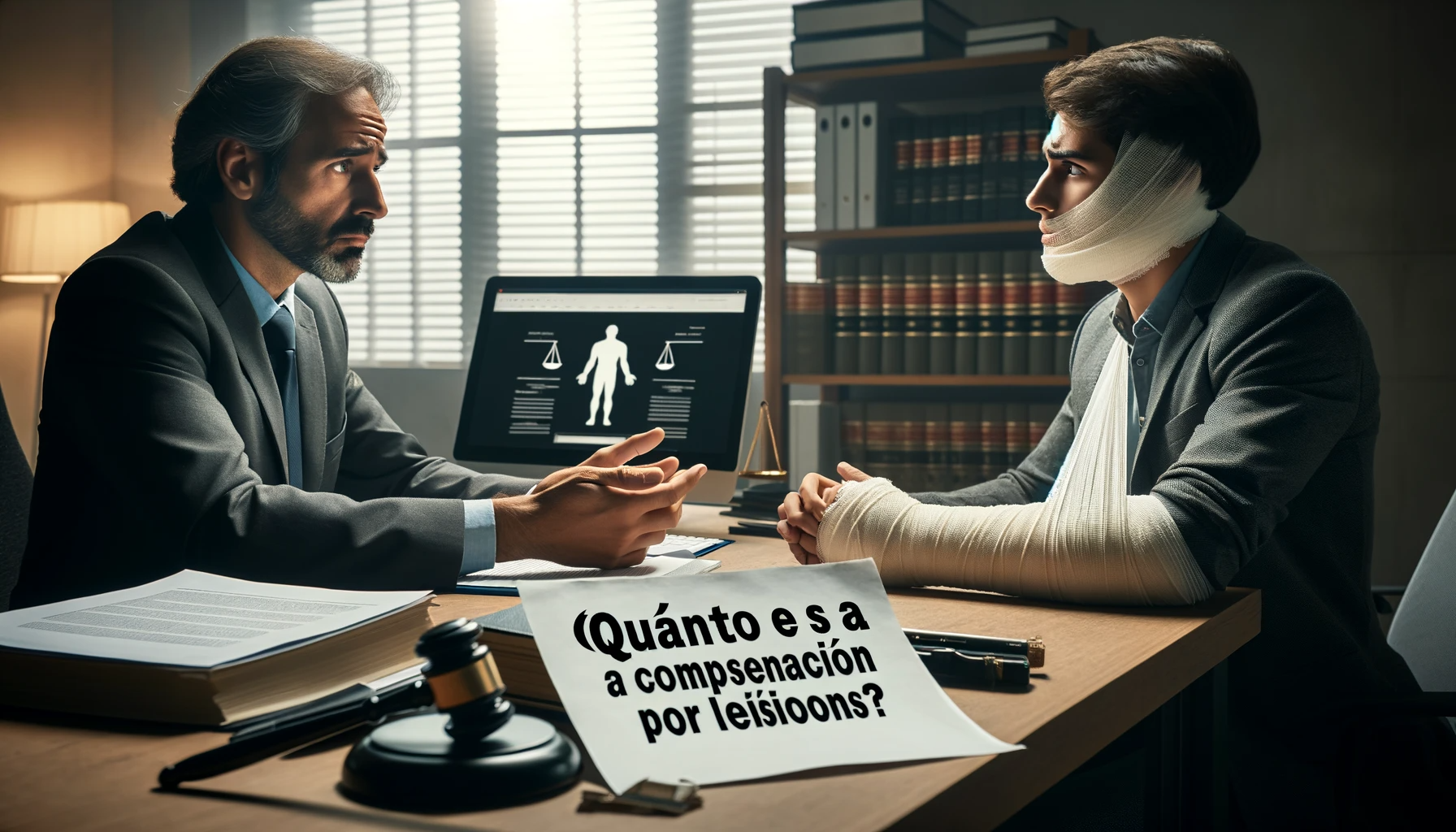Understanding Workplace Accident Lawsuits
Workplace Accidents: The Legal Perspective
Workplace accidents occur when an employee sustains injury or illness while performing their job duties, typically within the employer’s premises. When such incidents take place, they often lead to legal matters that can be resolved through workplace accident lawsuits. These types of lawsuits are primarily grounded on
Personal injury law or
Workers' compensation law, depending on the jurisdiction and circumstances.
The Role of Negligence in Work-related Injury Cases
Negligence plays a critical role in deciding the outcome of workplace accident lawsuits. If it can be proved that the employer was negligent in providing a safe working environment, the chances of winning the lawsuit increase dramatically. For instance, lack of proper safety measures, inadequate training, or poorly maintained equipment may be considered forms of negligence. Proving negligence, however, is a complex process and often requires substantial evidence and expert testimonies.
In many jurisdictions,
Workers' compensationlaws provide employees with a quicker and more straightforward remedy for workplace injuries, regardless of fault. However, accepting
Workers' compensation benefits often means waiving the right to sue the employer for negligence. Hence, it's essential to assess the potential benefits and drawbacks before deciding to proceed with a workers' compensation claim or a
Personal injury lawsuit.

The Process of Filing a Workplace Accident Lawsuit
Filing a lawsuit involves several steps: incident report filing, evidence gathering, claim filing, negotiation, and, if necessary, court proceedings. This legal process can be time-consuming and stressful, especially without legal representation. Therefore, seeking the assistance of an experienced attorney is highly recommended.
Evaluating Damages and Settlements
The damages incurred from a workplace accident can be significant and multifaceted, including medical expenses, lost wages, and non-economic damages, such as pain and suffering. The aim of a settlement in a workplace accident lawsuit is to provide an injured worker with adequate compensation for these damages. The amount of settlement depends on multiple factors including the severity of the injury, cost of medical treatment, impact on earning capacity, and employer's degree of negligence.
Impact of the Severity of the Injury on the Timeline
The Influence of Injury Severity on Legal Process Duration
The severity of the injury suffered in a workplace accident inevitably affects the duration of the ensuing lawsuit. Generally speaking, more severe injuries tend to result in longer lawsuits. This is primarily due to more complex legal and medical issues involved, including the effort needed to adequately determine and demonstrate the extent of the damages. For example, catastrophic injuries often require extensive medical prognoses, multiple expert testimonies, and long-term considerations like loss of future earnings or long-term medical care.
Claim Assessment Timeframe
The severity of the injury also impacts the time it takes to properly assess and substantiate the claim. In cases involving minor injuries, the damages are typically easier to calculate and agree upon. However, for major injuries, there can be a range of variables to consider including ongoing medical expenses, rehabilitation costs, and incapacity to earn in the future. This thorough assessment can elongate the lawsuit process as attorneys, insurance companies, and medical professionals take their time in ensuring an accurate evaluation.
Dispute Intensity Over Damages
The intensity of disputes over the level of damages also directly correlates with the severity of the injury. Employers or insurance companies may be more likely to contest claims involving higher compensation payouts, which often come with severe injuries. Lawyers may need to spend additional time gathering the necessary proof and arguing these cases in court, which adds to the overall timeline of the lawsuit.
The Extent of Required Medical Evidence
Severe injuries often require more substantial medical evidence, which can extend the duration of the case. Gathering comprehensive medical records, procuring expert opinions, and determining permanent disability ratings are time-consuming tasks. Also, the court may adjourn cases until the victim reaches Maximum Medical Improvement (MMI) so that the total possible future medical expenses can be accurately estimated.
Impact on Settlement Negotiations
Lastly, the severity of an injury could impact settlement negotiations. In cases of severe injuries, these negotiations can become complex and protracted due to high compensation claims, which the defendant may attempt to reduce. The more serious a workplace injury is, the more likely it is that the case will involve drawn-out negotiations or even a trial, thus extending the lawsuit's timeline.
The Process of Filing a Lawsuit: What to Expect
Initial Assessment and Finding Legal Representation
The first step in the process of filing a lawsuit involves consulting with an attorney. During this preliminary stage, the legal professional will assess the merit of your case based on the details and evidence provided. If both parties agree to proceed, official legal representation will be established through what's known as a retainer agreement.
Filing the Complaint and Summons
Once you've secured legal representation, your attorney will draft a formal "complaint" which outlines your claim and the damages you seek. This document is then filed with the court. Upon filing, a "summons" will also be issued to the defendant, through which they are formally notified of the pending lawsuit and given a deadline by which they must respond.
The Discovery Process
Following the filing of the complaint and the receipt of the defendant's response, both parties initiate the discovery process. This phase includes the exchange of pertinent information through depositions, interrogatories, requests for production of documents, and requests for admissions. The aim here is to gather as much evidence as possible to strengthen your case.
Negotiation and Settlement Discussions
In many instances, cases are resolved before they ever reach the courtroom. Attorneys from both sides may embark on negotiation discussions after the discovery process, with the goal of reaching a settlement that is agreeable to both parties. If negotiations prove successful, a settlement agreement is drafted, signed, and the lawsuit concludes.
Going to Trial
If a settlement cannot be agreed upon, the case proceeds to trial. Here, both parties present their arguments and evidence before a judge or jury. After all testimonies and cross-examinations are concluded, the judge or jury deliberates and then issues a verdict. Should the verdict be in your favor, the court will determine the amount of compensation you are entitled to.
Role of Evidence and Investigation in Lawsuit Duration
Gathering Evidence and Its Impact on Lawsuit Duration
The process of gathering evidence in a workplace accident lawsuit can significantly increase the duration of the case. This step involves collecting all relevant information to support a claim of negligence or misconduct, including communication records, surveillance footage, safety records, and eyewitness testimonies. The time taken to gather this data depends on the complexity of the case, availability of information, and cooperation of involved parties.
Investigation Process: A Time Consuming Task
Following the collection of evidence for a workplace accident lawsuit, an in-depth investigation comes into play. This step is crucial to understand the circumstances that led to the incident and verify the authenticity of the collected evidence. Investigations might involve interviews, site inspections, and expert analyses. Each one of these activities consumes considerable time and depending on their complexity, can extend the duration of the lawsuit substantially.
Role of Expert Witnesses in Prolonging Litigation
Often, workplace accident lawsuits involve expert witnesses whose job it is to interpret the technical aspects of the collected evidence. These professionals can testify about standard industry practices, cause of accident, or the extent of injury or damages. Finding, interviewing, and preparing such witnesses for trial events like depositions and testimonies can add more time to the lawsuit’s timeline.
Evidence Presentation and Pre-trial Motions
After the completion of evidence gathering and investigation, the lawyers need to prepare and present the findings before the court. This involves drafting legal documents, filing pre-trial motions, and responding to opposition motions. These administrative and procedural tasks, while necessary, add more time to the overall duration of the lawsuit.
The Discovery Phase: A Critical Juncture
The discovery phase, where both parties exchange information and evidence, significantly influences the length of a lawsuit. If disagreements arise over the admissibility of certain pieces of evidence, additional court proceedings may be necessary. These evidentiary disputes can delay the progress of the lawsuit and extend its duration further. This phase also allows for negotiation and settlement talks, which in turn could either shorten or lengthen the lawsuit duration based on how these discussions progress.
Effect of Negotiations and Possible Settlements
In any workplace accident lawsuit, the process of negotiations and potential settlements could significantly affect the duration of the case. This section aims to explore how these aspects influence the timeline of a lawsuit.
The Role of Negotiations
Negotiations typically occur after the plaintiff's lawyer has gathered all necessary details about the case including the extent of injuries and damages, cost of medical care, lost wages and future financial implications associated with the accident. The duration of these negotiations can vary based on the complexity of the case, the willingness of both parties to settle and the competency of the lawyers involved. They could range from a few weeks to several months.
Impact of Settlement Offers
Settlement offers often play a critical role in determining the duration of a lawsuit. If a satisfactory settlement offer is made early on, the lawsuit may conclude sooner than anticipated. The plaintiff has the option to accept the offer, which would lead to an immediate close of the case. Alternatively, they may choose to negotiate further or decline the offer altogether, prolonging the lawsuit.
The Influence of Mediation
Sometimes, both parties might agree to involve a neutral third party, known as a mediator, to help resolve the dispute out of court. This process, known as mediation, can expedite the conclusion of a case if an agreement is reached. However, if mediation fails, the lawsuit will proceed to trial, thereby extending the timeline.
Risks of Trial
If negotiations and settlements fail to reach a resolution, the case proceeds to trial. The trial phase can add significant time to the case; it involves extensive preparation, presentation of evidence, witness testimonies, and finally, the judge or jury’s decision. Notably, even after a verdict, appeals can be filed which can further extend the lawsuit's duration.
The Trial Phase: What it Involves and How Long it Might Take
Understanding the Trial Phase
The trial phase begins after discovery and settlement negotiations, two crucial stages in any workplace accident lawsuit. During this phase, both parties present their case in front of a judge or jury who will ultimately decide on the matter. The process involves presenting evidence, examining witnesses, and making legal arguments to convince the court of the merit of one's case.
Components of the Trial Process
There are several key steps involved in the trial phase. It starts with opening statements from both parties, followed by plaintiff’s testimony and evidence presentation. The defendant then presents their side, including any counter-evidence or witnesses. Each party gets a chance to cross-examine the other's witnesses and challenge the presented evidence. Finally, closing arguments are made. At times, motion hearings may also occur before or during the trial to decide certain legal issues.
Time Frame of the Trial Phase
The length of the trial phase can vary greatly depending on the complexity of the case, the availability of court dates, and the number of witnesses involved. It can take anywhere from a few days to a few weeks for a simple case. However, for complicated cases involving multiple parties, expert witnesses, and extensive evidence, the trial may last several months or even years. Moreover, court scheduling and backlog can also elongate the process.
Factors Affecting Trial Duration
There are several factors that can influence the length of the trial phase. These include the court's schedule, the efficiency of the legal teams, the number of witnesses, the volume of evidence, and whether or not the trial is interrupted by a settlement negotiation. Unforeseen circumstances, such as change of counsel, recusal of a judge, or even a mistrial, can also cause delays.
Judgement and Post-Trial Motion
Once the trial concludes, the judge or jury deliberates to reach a verdict. This can take from a few hours to several days. After the verdict, there is usually a post-trial phase where parties might motion for a new trial or appeal the judgment. This phase does not directly affect the length of the trial but does add to the overall duration of the lawsuit process.
Final Thoughts: Factors Influencing the Duration of the Lawsuit
The Complexity of the Case
The more complex a case is, the longer it will likely take to resolve. Factors such as multiple defendants, a high number of witnesses, or intricate legal issues can lengthen the trial process. Even before the trial, pre-trial procedures including discovery, depositions, and motion hearings can become extensive.

Evidence Gathering Duration
In every lawsuit, gathering proof and presenting a solid base of evidence takes time. This entails collecting medical reports and bills, witness statements, accident reports, expert witness findings and more. The timing also depends on how cooperative the other parties involved in your case are during this process.
Availability of Court Dates
Court schedules can greatly influence how long a lawsuit lasts. Many courts face case backlogs, leading to considerable delays before a trial can be scheduled. Sometimes, the judge's availability can also be a factor. It is not unusual for a case to get postponed due to court or judge unavailability.
Negotiation Periods
Settlement negotiations can either expedite or prolong a lawsuit. If both parties are open to negotiation and reach an agreement early, the lawsuit could end quickly. However, if negotiations continue without reaching a resolution, they could extend the duration of the case.
Caseload of Your Legal Team
Your attorney's workload can also be a determining factor in the duration of your lawsuit. If your legal team has numerous cases to handle simultaneously, they might not be able to devote as much fast-paced attention to your case, potentially extending the lawsuit timeline. Therefore, it's important to discuss this aspect with your attorney beforehand.
Conclusion
The duration of a workplace accident lawsuit varies depending on several factors, including the complexity of the case, the cooperation of involved parties, and the court's schedule. While some cases may be resolved quickly through negotiation or mediation, others can take months or even years to reach a resolution. It's essential to work with experienced legal professionals who can guide you through the process and help you understand the timeline for your specific case.
Look for an attorney who has the right legal resources for your legal needs.
Contact us here on the
Warmuth Law website or through our hotline 888-517-9888.
Frequently Asked Questions (FAQ's)
1. How long does it typically take to resolve a workplace accident lawsuit?
The time it takes to resolve a workplace accident lawsuit can vary widely. Some cases may be settled relatively quickly, within a few months, while others may take several years to reach a resolution, depending on the complexity of the case and other factors.
2. What factors can affect the timeline of a workplace accident lawsuit?
Several factors can affect the timeline of a workplace accident lawsuit, including the complexity of the case, the number of parties involved, the availability of evidence, and the court's schedule. Additionally, the willingness of the parties to negotiate and reach a settlement can also impact the timeline.
3. Can I speed up the process of a workplace accident lawsuit?
While you cannot control every aspect of the legal process, there are steps you can take to help expedite your case. This includes providing your attorney with all relevant information and documentation, cooperating with the legal process, and being prepared for court proceedings.
4. What happens if the other party delays the lawsuit?
If the other party delays the lawsuit, your attorney can take steps to move the case forward, such as filing motions with the court to compel action or seeking sanctions against the delaying party. However, it's essential to work closely with your attorney to determine the best course of action for your case.
5. Is it possible to settle a workplace accident lawsuit out of court?
Yes, it is possible to settle a workplace accident lawsuit out of court through negotiation or mediation. Many cases are resolved in this way, as it can be faster and less expensive than going to trial. However, whether to settle out of court or proceed to trial depends on the specific circumstances of your case and your legal objectives.











